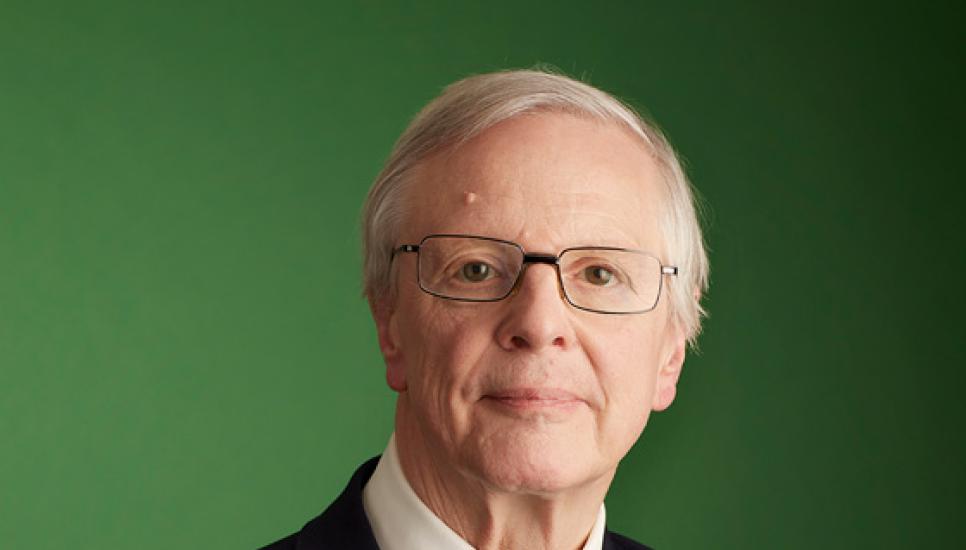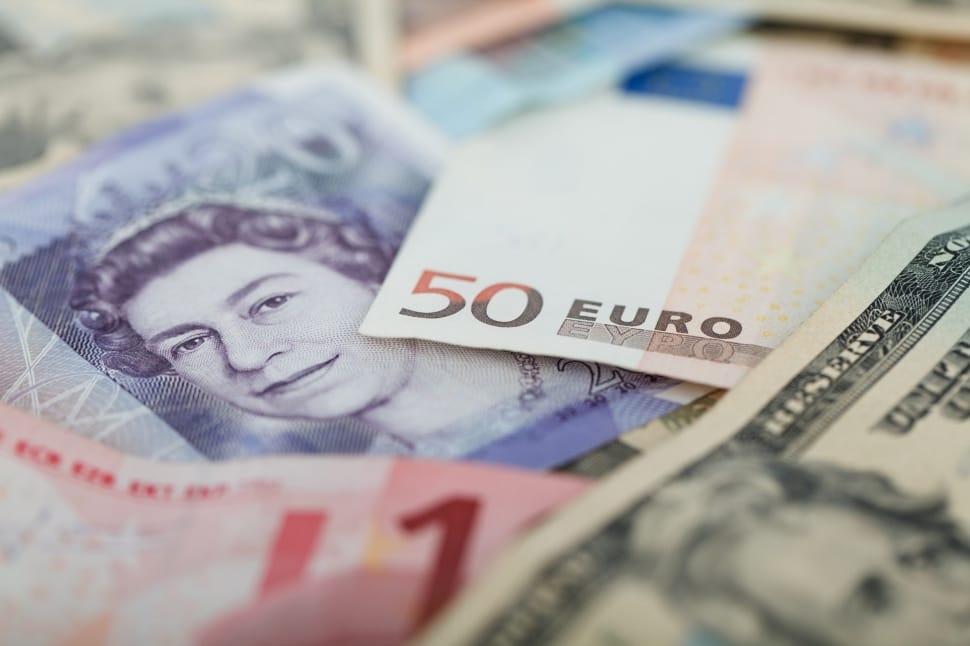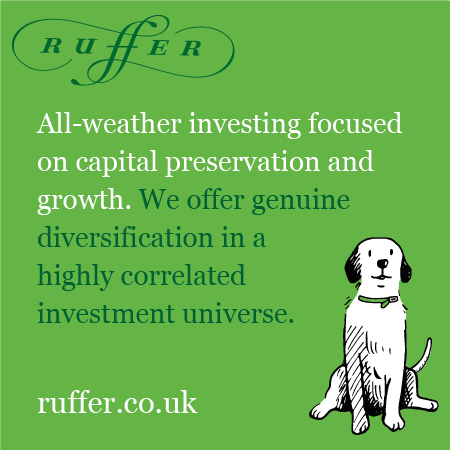Jonathan Ruffer on assets, quantitative easing and inflation

I am writing this just before a US inflation report which, to quote Bloomberg, “May provide clues on the monetary-policy outlook; S&P futures were little changed, as were European stocks [awaiting] the next policy statement from the European Central Bank…”
This seemed to catch exactly the calm-before-the-storm characterised by the right-wing picture magazine France Illustree in the early months of 1939. Its pages were filled with pacific speeches by Hitler, tub-thumping thoughts by French ministers, and artists’ impressions of the latest troop carriers and tanks to roll off the prototype production lines. The run of volumes I have stops abruptly with the issue dated avril 1940.
We have been talking of inflation for well over a decade—which is not the same thing as calling its timing. An impasse was created by the failure of the economy to grow after the 2008 crisis—all the risks (as we patiently explained) were deflationary, and in vain did the central banks and governments try to force an inflationary impulse into a sluggish world. Their primary weapon? An invention, deployed on a grand scale—quantitative easing (QE to its friends).
Government money pumped into the system, accompanied by wholesale purchases of existing assets, looked as though it would spark inflation—in fact, the extra liquidity flowed in a different direction, into asset prices. There is nothing like an increase in net worth to reassure the financial community that the authorities are on top of things. QE, which looked like a big risk in 2009, turned out to be the right answer, provided the right answer was synonymous with a positive response to the question “am I richer?”.
 Three prongs of the inflation trident
Three prongs of the inflation trident
It is still perhaps too early to declare QE a success, because it exacerbated two mischiefs. Governments were already indebted in 2008, and the gap between rich and poor was already wide. The failure of the economy to grow exposed the danger of over-indebtedness, since a bigger economy matched by deeper indebtedness would have bought time at no cost; as it was, it bought time, but came at the price of wartime levels of debt.
In 1994, the investment house of Ruffer came into existence following a correct macro call. I saw the early 1990s as a bookend. Most investors assumed inflation was a modern malaise, with us forever—and yet the three prongs of the trident which delivered inflation had, to my eye, already been blunted. Those concerned about the first prong—inflation as the child of too much money in circulation – needed to consider the actions of the Neptune-like figure of Paul Volcker (pictured), chair of the US Federal Reserve from 1979 to 1987. Volcker, six foot seven in his socks, had been wringing money growth out of the system through eye-wateringly high interest rates: “Whatever it takes”, with a New Jersey twang.
 The second prong came in the form of wage increases worldwide. Here, those concerned needed to consider the defanging of the trade unions. Divided, the workforce of the early 1990s would resume its role as price-taker, rather than inflation-maker. Wage growth looked to be a past problem, not a future one.
The second prong came in the form of wage increases worldwide. Here, those concerned needed to consider the defanging of the trade unions. Divided, the workforce of the early 1990s would resume its role as price-taker, rather than inflation-maker. Wage growth looked to be a past problem, not a future one.
The supply chain made up the third prong of the trident. China was emerging as an economic power, one that had outgrown its role of making plastic presents for Christmas. Supply shortages looked to be on the way out; supply gluts, on the way in.
Together this triple-blunting proved decisive. It meant Ruffer could build portfolios dominated by long bonds, married with equities that would be re-rated upwards. This created an unusually sure platform for making money. And this style of investment, often described as 60/40, has since become enormously popular.
Skip forward 30 years and we are now approaching the other end of the bookshelf: the trends will reverse, as we reach a new bookend. The primary move from here will be for long-term interest rates to go up, and for equities to de-rate. This creates an unusually sure platform not for making money but for losing it.

Pressure on wages
Let’s inspect the trident’s prongs. How does the tide of money creation look around the world? Awash to the gunwales, whatever they may be, and however they’re known to their friends. How tight is the labour market today? This isn’t wholly clear in the dislocated world of a pandemic, but what is evident is that the pressure on wages is in exactly the wrong place for price stability – in Britain, for example, it is highest in the National Health Service (who have kept us well) and the hospitality sector (which will, we hope, keep us happy).
What about the balance of supply and demand? My colleague Jamie Dannhauser recently alerted us to shipping freight prices (1)—up fivefold since the start of the pandemic. There are structural imbalances here, with the west wanting more goods than the east (and it’s east where the ships need to take cargo if they are to bring stuff back at reasonable shipping rates).
To that we can add some of Jamie’s vignettes. US furniture inflation has hit its highest level since 1980 (2). The price of US televisions—which have spent the past 15 years falling at an average annual rate of around 20%—are now rising at the fastest pace since 1957 (3). And if commodities are the inanimate voice of the many, they are shouting the message of “inflation onwards and upwards”.
We can also use a wider lens to see the trident’s third prong getting sharper. As the world has become both larger (China, emerging markets) and an oyster (the internet, ‘just in time’ supply chains), we have come to take for granted the dynamic where lower prices overwhelm the second cheapest supplier. But running manufacturing ‘lean’ with low inventory is proving inadequate in a more troubled world. It causes delays when things go wrong. Worse, the fragilities of relying on a single source for vital supplies are being exposed. The increasingly cold war with China means the security of supply is becoming a consideration as important as price. Rebuilding lost capabilities at (or closer to) home will come with a higher price tag than importing from overseas.
 Backlash
Backlash
There are two further factors to consider for the investment environment we are moving into. The first is the backlash against the beneficiaries of the rise in asset values. The absurdly rich have done the best, the quite rich, correspondingly so. But the difference between the first time homeowner, and his slightly younger cousin, not yet on the housing ladder, is the one calculated to cause most resentment—the still-renting cousin who finds the latest government confetti has sent house prices up 13% (4) is unlikely to accept it as simply one of those things. Prepare for systematic pressure—political, social, financial—which will, net-net, drive prices up, and asset values down.
The second factor, carrying the whiff of the flat earthers, is the possibility that money has been irretrievably debased. The move to ‘fiat’ currencies—taken from God’s cry, “Fiat lux, let there be light!”—is now so long established we no longer worry a government’s cry of “Let it be money!” lacks the immutability of divine command.
 The cry has worked because we trust it as money. In 1880s France, paper money was trusted more than the solid silver coins, because the paper was backed by gold, and people trusted gold more than silver. But there comes a moment when people stop trusting a government’s paper—usually long after the evidence the paper is untrustworthy has started to germinate. The nations of the British Empire continued to hold their balances in the Bank of England on the basis that Queen Victoria had been a good egg; there is a similar danger that confidence in the muscle of Uncle Sam keeps one in the dollar beyond its worth.
The cry has worked because we trust it as money. In 1880s France, paper money was trusted more than the solid silver coins, because the paper was backed by gold, and people trusted gold more than silver. But there comes a moment when people stop trusting a government’s paper—usually long after the evidence the paper is untrustworthy has started to germinate. The nations of the British Empire continued to hold their balances in the Bank of England on the basis that Queen Victoria had been a good egg; there is a similar danger that confidence in the muscle of Uncle Sam keeps one in the dollar beyond its worth.
Make no mistake, if confidence is lost in the major currencies, no others are safe. The drop in GDP through the pandemic, and the sharp rise in borrowing because of that same event, has taken debt-to-GDP levels into unprecedented territory. But it is not precedent which determines the tipping point on confidence; it is something much more random, something whose inconsequence nevertheless becomes the moment when the Bastille is stormed.
Most of this review could have been written before the pandemic. But 15 months of dislocation have expanded the fissures and accelerated the trends. Inflation might remain as a chronic growl, or it might burst into disruptive life. Either way, there will be a massive change in asset leadership, with the leaderboard of the past decade to be turned on its head. Ruffer portfolios are invested on the basis that we are entering a new era.
1 Freightos bulk index
2 US Bureau for Labor Statistics
3 Ibid
4 UK Nationwide house price index
 Past performance is not a guide to future performance. The value of investments and the income derived therefrom can decrease as well as increase and you may not get back the full amount originally invested. Ruffer performance is shown after deduction of all fees and management charges, and on the basis of income being reinvested. The value of overseas investments will be influenced by the rate of exchange.
Past performance is not a guide to future performance. The value of investments and the income derived therefrom can decrease as well as increase and you may not get back the full amount originally invested. Ruffer performance is shown after deduction of all fees and management charges, and on the basis of income being reinvested. The value of overseas investments will be influenced by the rate of exchange.
The views expressed in this article are not intended as an offer or solicitation for the purchase or sale of any investment or financial instrument, including interests in any of Ruffer’s funds. The information contained in the article is fact based and does not constitute investment research, investment advice or a personal recommendation, and should not be used as the basis for any investment decision. This document does not take account of any potential investor’s investment objectives, particular needs or financial situation. This document reflects Ruffer’s opinions at the date of publication only, the opinions are subject to change without notice and Ruffer shall bear no responsibility for the opinions offered. Read the full disclaimer.






